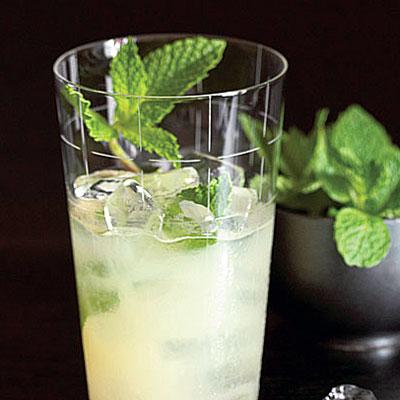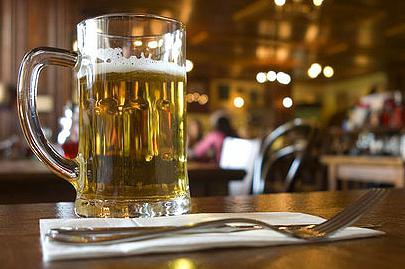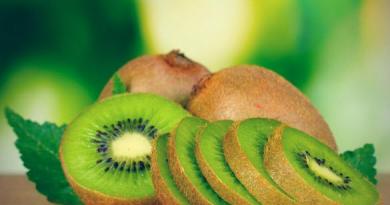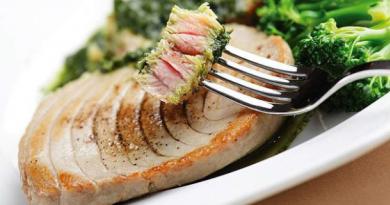A rare holiday or a sad event in Russia does without alcohol. Low-alcohol drinks are gaining more and more popularity today. They enable the consumer to be "under a small degree", while not getting drunk much. Because of this, many young people do not miss the opportunity to drink a cocktail or beer every evening. There is an opinion that the harm of low-alcohol drinks is not so great. Doctors argue that the damage caused to health by low-alcohol drinks is sufficient to stop using them. But let's get it right...
Types and composition
The main classification is based on the amount of alcohol contained. Ethyl alcohol is the basis of any alcoholic beverage. Depending on the amount of this clear liquid with a characteristic odor and burning taste, alcoholic beverages are divided into types.
In high-alcohol drinks, the percentage of ethyl alcohol reaches 96. Strong drinks such as vodka, cognac, whiskey and rum contain from 31 to 65% ethyl alcohol. Liquor products and wines are classified as medium-alcohol drinks, which are characterized by an alcohol content of 10 to 30%. Low alcohol drinks contain only 1.5 to 9% alcohol. The most popular representative of this category is beer.
Ethyl alcohol in Russia is widely used in various fields. In industry, medicine, the food industry and the national economy, it is impossible to do without it. But it has a very detrimental effect on the human body.
Where did outlandish drinks come from in Russia
"Long drink", or drinks that should be drunk for a long time, stretching out the pleasure, appeared in Russia in the early nineties. The first swallows arrived, as expected, from Europe. Not yet spoiled Russian buyers were attracted by the unusual taste and affordable price of foreign treats. Domestic manufacturers noticed high demand, simplicity and cheapness of technologies, so they quickly became serious competitors to European brands.
![]()
In the history of the production of Russian low-alcohol drinks, there have been recessions, crises, and prosperity, as well as import bans. Today, production and foreign deliveries are well established, and there is a huge assortment of low-alcohol drinks on store shelves.
Manufacturers are preparing thoroughly for the onset of summer: they are replenishing the list of low-alcohol drinks, creating new flavors, experimenting with packaging, updating design, and looking for new outlets.
How low-alcohol drinks won the love and wallets of buyers
The vast majority of adult customers have tried a low-alcohol cocktail at least once in their lives, and many have become its true connoisseurs and regular consumers. What is the secret of the popularity of these drinks?
First, there is a huge selection. The buyer, even with the most unusual gastronomic preferences, can find a drink to taste. The most common drinks are lemon, orange, grapefruit, raspberry, banana, exotic fruit and, of course, beer.
Secondly: pricing policy. As noted above, low-alcohol tonic drinks are much more attractive in price than alcohol of a higher strength.
Thirdly: walking distance. Today, on the shelves of any store, supermarket, cafe or club menu there is a huge selection of cocktails.

Fourthly: the effect created by the drink is the opportunity to relax and unwind. With this drink, a person can not only quench his thirst, but also, thanks to a small dose of alcohol, relax and liberate himself, without fear of getting drunk to the point of recklessness.
Of course, low-alcohol drinks are mostly preferred by active young people. Most manufacturers are guided by them when choosing technologies, containers and advertising strategies. People belonging to the older age category prefer stronger drinks and beer.
Drinks to tone up
A modern person, especially in a metropolis, lives in constant hustle, noise, stress and habits. Including he gets used to being in trend and living at a frantic pace. Of course, this requires strength and rest. But where to take time for rest, how to spend it with benefit and make the body work longer and the brain more productive? Many young people use low-alcohol tonic drinks as a “recharge”. The list of popular brands on the market is very extensive.
Tonics include non-alcoholic and low-alcohol drinks that contain a tonic. Such a component requires very little to have an exciting (toning) effect on the human body.

Energy drinks contain carbohydrates, caffeine and plant extracts. These components have a stimulating effect on a person. It is believed that not only harm, but also benefits the body bring low-alcohol tonic drinks. The list of organs that they positively affect is impressive: the digestive system, stomach, intestines, cardiovascular and nervous systems.
But there are categories of consumers who are not recommended to use tonic drinks - these are pregnant women, adolescents, the elderly, as well as people suffering from insomnia or with an unstable psyche. Even a healthy adult should not drink more than one bottle (can) per day.
Popular types of low-alcohol drinks in Russia
Increasingly, low-alcohol drinks began to fall into the shopping cart. Affordable price, large selection and relaxing effect of drinking makes them attractive to consumers.
The following drinks are considered the most famous:
Kvass is a traditional Russian drink with a strength of up to 2.5%. To obtain kvass, you need bread or milk sourdough. Lactic and acetic acids endow kvass with useful properties. It helps to improve digestion, metabolism, as well as normal muscle tone. In addition, it includes a bouquet of vitamins, amino acids and trace elements that have a positive effect on the body. But kvass is contraindicated during pregnancy, lactation, children under the age of three, as well as people with stomach ulcers and liver cirrhosis.
Cider and Perry - Apple must and yeast are used to make these drinks. For the manufacture of cider, a special variety of apples is grown, so it is not the cheapest in its category. Perry is considered a type of cider, only it is based on the fermentation of pear juice.
Champagne - not all such wines are classified as low-alcohol drinks, for some the fortress exceeds the threshold of 9%. Champagne is a drink of celebration and celebration. It is produced by one of the methods: autotrophic or bottled champagne. In a quality drink, the bubbles will be small, not large or medium, as in sparkling water. Champagne is credited with a number of useful properties due to the polyphenol that is included in its composition. This drink has bactericidal properties, lowers blood pressure and improves blood circulation in the brain. But they get drunk very quickly from it, the bubbles can cause putrefaction in the stomach, and when pregnant women drink champagne, the fetus can develop cerebral palsy.
Wine is one of the noblest drinks. Although most wines do not fall into the category of low-alcohol drinks, since their strength mark starts at 9%. The main raw material is grapes of different varieties. Distinguish between red and white wine, dry, semi-dry, semi-sweet, table, rose. Very often on the shelves you can find a bottle at a very low price, indicating that the drink is based on powder. Natural wine really has useful properties, because it contains vitamins, acids, microelements, antioxidants, iron and other biologically active substances. If you drink wine within reasonable limits, it helps to lower cholesterol, remove toxins from the body. With the abuse of such a drink, a person is threatened with coronary heart disease, diabetes and the development of cancers.
Beer is a low-alcohol drink made with barley malt, hops, yeast and water. This product took all the best from cereals: vitamins B 1, B 2, B 6, H, C, K, acids and trace elements. Drinking beer in moderation improves metabolic processes and reduces the risk of malignant tumors.

- Liqueur-based cocktails - Gin Tonic, Jaguar, Strike, Hooch, Screwdriver, Shake, Revo, Rum-Cola, Brandy-Cola and more. There are a large number of such drinks on the shelves, we have given only a few examples. There are a lot of preservatives in jars and bottles with such products.
- "Beer belly" is a well-known trait of beer drinkers. The deposition of fat in males occurs according to the female type and leads to further obesity. The fat formed due to the love of beer breaks down very quickly and enters the liver, forming cholesterol there.
- In the future, such men are waiting for atherosclerosis, which increases the risk of heart attack and stroke.
- In men who consume beer in large quantities, the development of gynecomastia is observed. It is expressed in an increase in the mammary glands, an increase in the timbre of the voice, cessation of the growth of bristles, emotional distress, and often as a result of such changes, impotence develops.
- the occurrence of a stroke;
- phlebeurysm;
- mental decline and memory impairment, since alcohol in any dose kills human brain cells;
- gastritis, stomach ulcer;
- hepatitis and cirrhosis of the liver;
- change in figure, deterioration in color and structure of the skin;
- hormonal disruptions, the development of infertility.
- drinking alcohol, including low-alcohol drinks in the wrong places;
- sale of alcoholic beverages in unauthorized places;
- after 22:00;
- non-compliance with advertising restrictions;
- disregard for age restrictions in the sale and consumption of alcoholic beverages.
Kumys is not a very common drink in Russia, but it definitely deserves attention. This product is made on the basis of mare's milk and, of course, yeast. The strength of such a drink can vary significantly from different manufacturers - from 0.2 to 40%. Kumis is endowed with useful properties due to vitamins, minerals, fats and live lactic acid bacteria that make up its composition. It has a positive effect on the nervous and cardiovascular systems.
These are the most popular drinks in our country. If low-alcohol drinks are considered more carefully in cultures of other countries, the list will be much longer.
Large-scale and single releases of low-alcohol drinks
Every customer knows about the existence of low-alcohol drinks. Today, such a large number of rarely drinking citizens can easily get confused in it. Let's figure out what applies to low-alcohol drinks.
Low-alcohol drinks are considered to be drinks, the alcohol content of which does not exceed 9%. In their preparation, juices, extracts of plant materials, bee products, grapes and sugar are used. The recipe also includes flavoring and aromatic additives, dyes and water. Naturally, this is an incomplete list of ingredients for preparing an alcoholic drink. The production and sale of alcoholic beverages is strictly regulated by the state.
Gardeners have their own secrets for the production of drinks of varying degrees of strength. Beer, cocktails, liqueurs, wine, kvass and other low-alcohol drinks at home are easy to prepare. Home "producers" like to talk about the benefits of their drinks, in any case, you should not abuse such products!
Stages of intoxication
The word "alcohol" comes from the Arabic "al kegol", which means "intoxicating". Undoubtedly, drinks containing alcohol have an intoxicating effect. There are several stages of the influence of alcohol on the body of an adult:

The effect of alcohol on the male body
There is a myth that, unlike strong alcoholic beverages, low-alcohol products are harmless. Low-alcohol drinks also have a negative effect on the male body, the list of consequences of which depends on their composition.
Most often, beer is consumed in large quantities. Consider the result based on it:
To help a man cope with hormonal disruptions and other problems caused by the frequent use of low-alcohol drinks, a healthy lifestyle, diets and refusal (at least a significant reduction) from these dangerous products can help.
The effect of alcohol on the female body
Low-alcohol drinks are often devastating to the female body, especially when they are consumed in large quantities. Ladies who are accustomed to drinking alcohol are threatened by:

It is better for girls and women to abstain or reduce the dose of alcohol intake. And there are times when alcohol, even with the smallest alcohol content, should be completely excluded from the diet. The use of low-alcohol drinks during pregnancy or lactation is strictly contraindicated!
The effect of alcohol on children and adolescents
Of course, if we talk about kvass and kefir, which also contain fermentation, then parents give these products to children without hesitation. When it comes to alcohol-containing drinks, it is worth remembering their effect on the child's body and not allowing the child to even taste.
Keeping track of a teenager is very difficult. Young boys and girls can't wait to try adult life and entertainment. But the harm of low-alcohol drinks is colossal, this needs to be explained and "hammered" to your child. A strong blow to an unformed organism can lead to tragedy. Here we are not only talking about deaths, but also diseases, mental and mental disorders, infertility and impotence.
Law and soft drinks
Many countries have introduced various bans on low-alcohol and tonic drinks.
In Russia, the legislation provides for penalties for such violations:
The struggle of the state with alcoholic products is inextricably linked with the promotion of such products, since their producers are serious taxpayers.
To drink or not to drink, everyone decides for himself. But we must remember that momentary weakness can have an irreparable effect on a person. If you abuse even low-alcohol drinks, the body will not forgive you!



